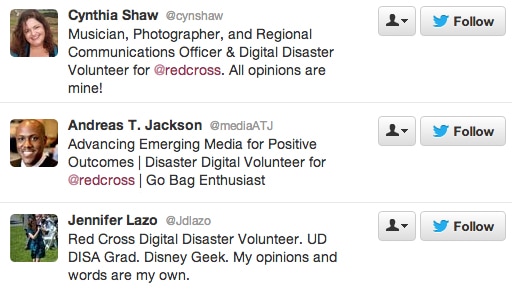Viral Marketing For Nonprofits: 5 Ideas To Create Social Currency
Social currency is the first component of Jonah Berger’s six STEPPS to viral marketing. In this installment of our viral marketing for nonprofits series, we share five ideas to create social currency for your nonprofit.
If your organization is developing a new campaign or initiative, or if you’re launching a new organization entirely, social currency will increase the likelihood of people sharing and talking about it. Social currency is the idea that people are more likely to take action or share something if it makes them look good. People want to feel cool, smart, and in-the-know, so give them opportunities to feel special, and they’ll tell others and spread word of mouth about your organization along the way.
Here are five ideas to create social currency to get people talking about your nonprofit.
1. Designate cool titles for your volunteers
As we mentioned in our overview of Berger’s six STEPPS, the Red Cross leverages social currency by giving their Twitter volunteers a cool title: Disaster Digital Volunteer. Red Cross has over 13 million volunteers in 187 countries, so this cool title makes their Digital Disaster Volunteers feel special, thus encouraging the volunteers to share their title along with Red Cross’ name.
2. Give supporters VIP experiences
Give your supporters opportunities to feel like VIPs by creating behind-the-scenes experiences that they’d be excited to tell their friends about. If your nonprofit is a museum, arboretum, or animal shelter, for example, consider hosting monthly behind-the-scenes tours or running quarterly contests to win a trip to come along for an animal rescue mission. If you tagged along with a sea-life rescue organization to capture an injured seal, you’d probably tell a few people.
These VIP opportunities will make your supporters feel like insiders, which make it likely for them to share their experience – along with your organization – with others. If your organization doesn’t own any sort of exhibition building, you can still make your supporters feel like VIP by hosting an event just for them, such as a donors-only party. Keep in mind that the experience must be remarkable enough that attendees would tell their friends about it.
3. Share “secrets”
Another way to create social currency is to create exclusive content. Give your ambassadors something you don’t share with the public. If you’re a food education organization, give your ambassadors an amazing new secret recipe every quarter. If you’re a local nonprofit that hosts workshops, create special ones just for your evangelists and allow them to bring a guest!
By sharing secrets or exclusive content with your biggest fans, they’ll likely share your content with others because it makes them look like insiders. As a matter of fact, social currency is the reason people blurt out secrets.
Jonah Berger says, “There’s a funny thing about secrets. Think about the last time someone told you a secret. Told you not to tell another soul. What’s the first thing you did with that information? You probably told someone else. And the reason is something called Social Currency. People talk about things that make them look good. Sharp and in-the-know. Smart and funny rather than behind the times.”
4. Share surprising information
In addition to our innate desire to look cool, people also want to look smart, so provide your supporters with remarkable content that will make them look smart and savvy. Make sure to package the information in a way that makes it easy to share, such as a blog post, graphic, or video.
For example, our client Thorn is a nonprofit that fights child trafficking using technology. Thorn can share a statistic about the number of children that are trafficked every year, but numbers are abstract and difficult to remember. Instead, Thorn and Polaris Project created a short video that shares a vivid and novel story of undercover authorities posing as Johns to rescue a girl who was being trafficked. When people share Thorn’s video or any other surprising information with their friends and family, they look smart and caring.
Give your supporters information they are likely to share with others, and by doing so, they share your organization along with it.
5. Allow your supporters toot their own horns
Have you ever tweeted praise for a brand or organization on Twitter? Your tweet was most likely favorited or re-tweeted by them because having a customer say something nice is great word of mouth for them. Your organization can do the same by tweeting thank yous and praises to supporters so that they can retweet.
Another way to praise your donors or biggest supporters is to create a page on your website that features these individuals, making it easier for them to share it via social media. Other ideas include taking photos of your volunteers and letting them tag themselves in it on Facebook. If your organization has an upcoming volunteer opportunity, create a Facebook event page so that your volunteers can easily share the event with their friends. Volunteering and supporting a nonprofit makes people look good- creating an event page will make it easier for your volunteers to spread the word about your organization.
How does your nonprofit create social currency? How does your nonprofit make supporters feel smart, cool, and in-the-know so that they spread word of mouth about your organization? Comment below to share your insights.
This is the first installment of our series on viral marketing for nonprofits. There are six elements to viral marketing: social currency, triggers, emotions, practical value, stories, and visibility. To read more about the other five elements to viral marketing for nonprofits, see our other blog posts here.
